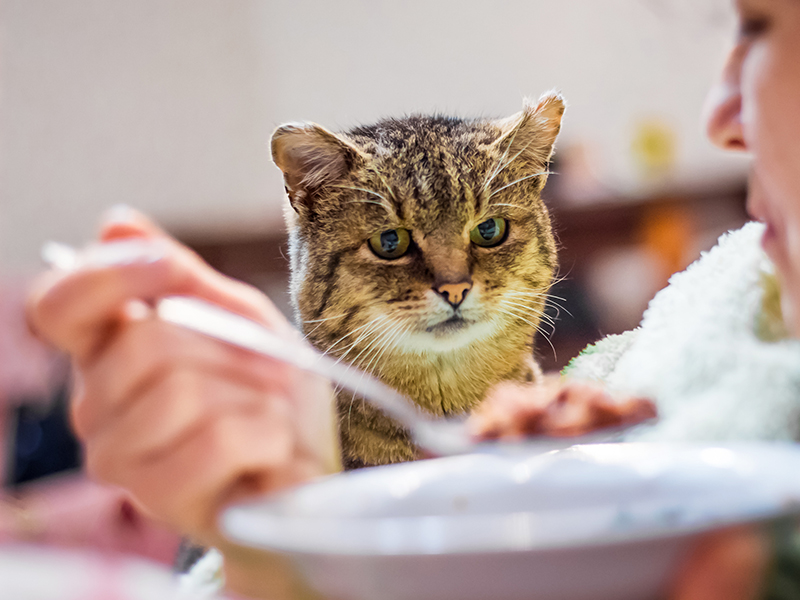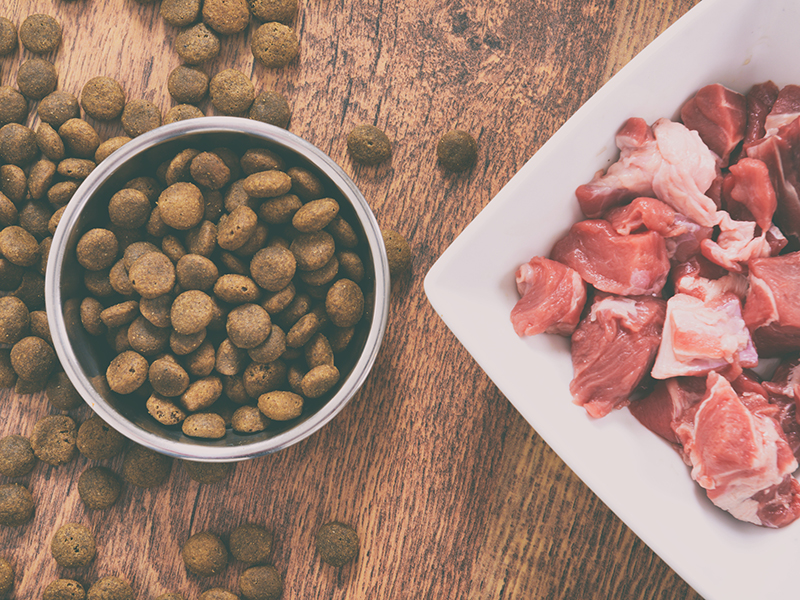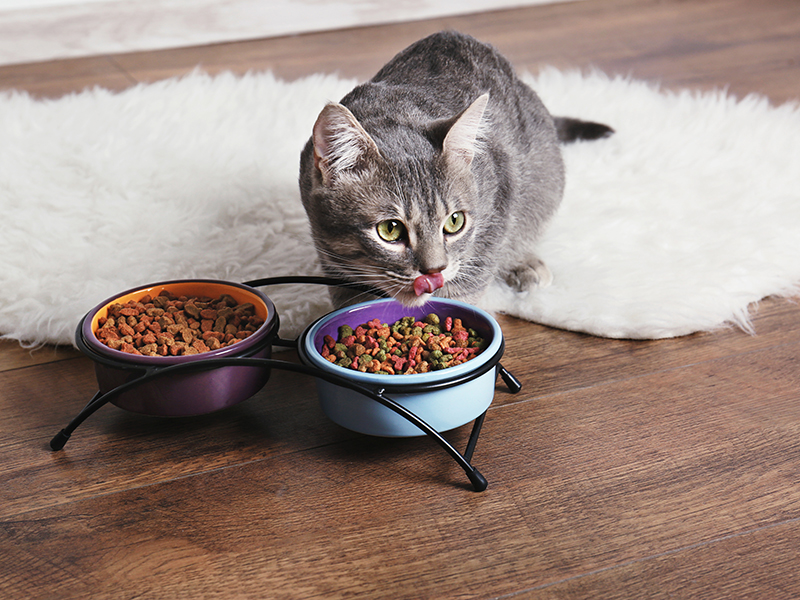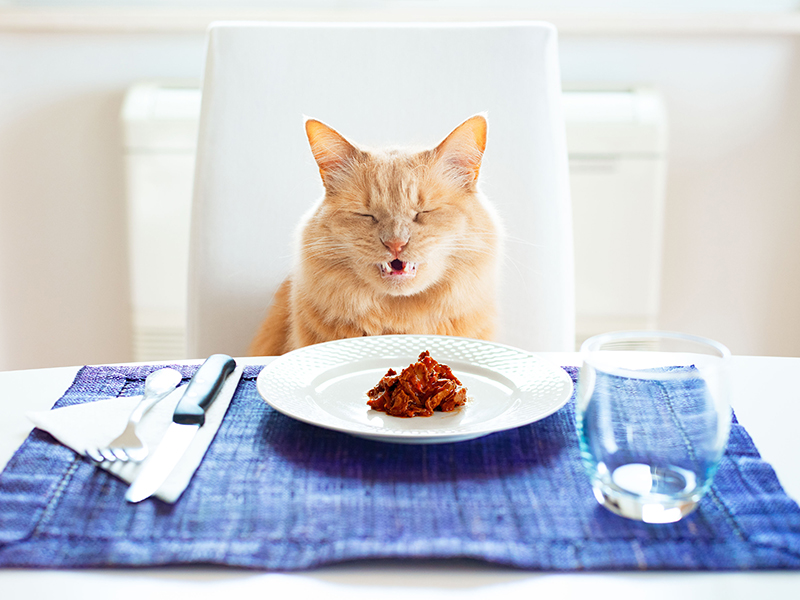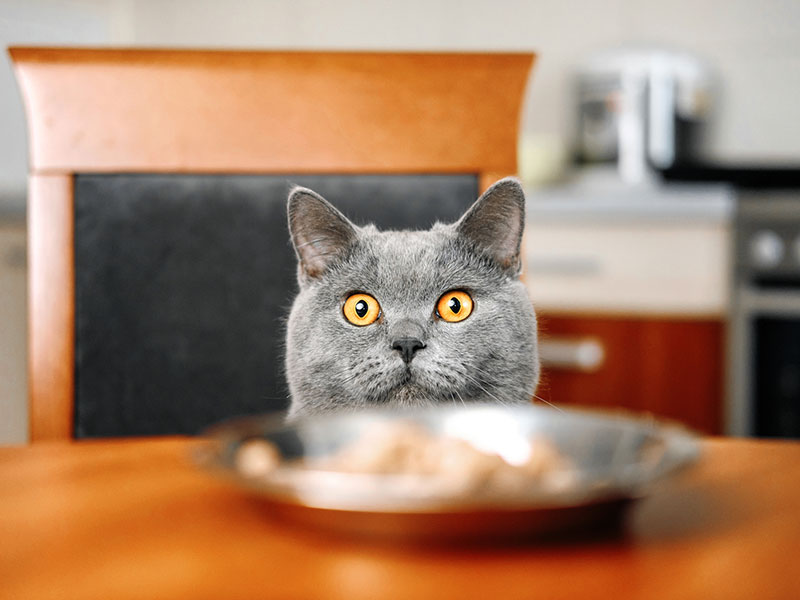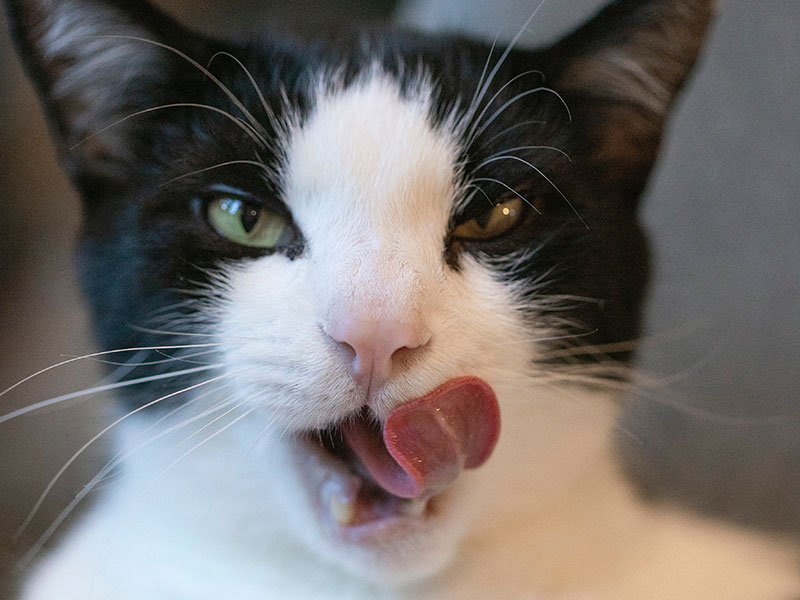Yes, human-grade cat food exists, but you probably shouldn’t eat it—and perhaps neither should your cat.
Human food and pet food are separated by a bunch of different regulations and verifiable standards—mostly set by the FDA and the US Department of Agriculture (USDA). As a result, the meat on your plate is unlikely to be the same stuff found in your cat’s dinner, even if your chosen brand markets themselves through images of mouthwatering salmon steaks or fresh chicken fillets.
That’s not to say that there aren’t human-grade cat foods out there, as well as small-batch and homemade options made with grocery store-quality goods. but we need to be careful about what exactly we mean by ‘human grade’ and how the term translates to nutritional profiles, cats’ needs, and the types of meat most of us are used to eating. So let’s look at the whats, whys, and hows of human-grade cat food.
What does Human Grade actually mean?
According to the AAFCO, ‘human-grade’ isn’t actually an official category of pet food. While companies might use the phrase to point towards the quality of their ingredients, when it comes to food standards, products are either categorized as ‘edible’ or not. So no grades, levels, or spectrums.
If the USDA deems a food product ‘edible’ it means that the ingredients contained within were grown and processed in environments and facilities certified by the relevant agricultural and food control regulations. The production line will also have been inspected and certified by an accredited food standards agency.
Bear in mind that this applies to all ingredients and production processes involved in the recipe, so for a pet food to be deemed legally edible, everything in there must be manufactured, packaged, and stored in accordance with the FDA’s regulations for Current Good Manufacturing Practice in Manufacturing, Packing, or Holding Human Food.
So…can I eat it?
If food is classified as edible, then you can eat it—but the question is whether all so-called human grade cat foods meet these edible standards. Because there’s a conflation of terms happening here, there’s a risk of misbranding, which is prohibited under both state and federal law.
In other words, brands can only legally label their cat foods as human-grade if they’re certified edible, and the simple inclusion of a human-grade label is enough to imply that a product meets edible standards. So, while I might question your motives in sharing your cat’s dinner, the answer is yes, you could eat cat foods that market themselves as human-grade. Just bear in mind that cat foods are not created for a human palette, nor are they formulated to meet human (omnivorous) nutritional needs.
However, the same doesn’t go for pets and human foods. Most owners are already aware of this, but it’s worth repeating that many products designed for human consumption are unhealthy or downright unsafe for cats to eat. Onions, for example, even when cooked, can cause anemia and issues with cats’ red blood cells. And despite the stereotype, many cats are actually lactose intolerant, so should steer clear of milk, cream, and other dairy products.
Raw and homemade cat food
If you make your own cat food, then you should have a pretty good idea of whether or not it’s fit for human consumption. Homemade raw cat food diets are growing in popularity, but they’re also pretty polarising. For some, a raw recipe is the ultimate in feline nutrition, while for others, they put cats at needless risk of infections such as salmonella.
One thing’s for sure: whether your cat’s eating a diet of raw or homemade food, it can’t simply consist of traditional meat cuts like breasts, legs, etc. Cats also need animal-derived fats, minerals, and fiber. This means that raw recipes often include less-choice cuts like liver, offal, and connective tissues. They also might feature additives and supplements, such as:
With all that extra stuff added, plus the possibility of raw chicken, raw diets tend to be far from most people’s conception of human-grade. They also require intensive preparation and supervision. Ingredients need to be sourced from highly reputable suppliers and delivered as fresh as possible. Meals then need to be prepared either daily at the point of consumption, or in a highly sanitized setting to reduce the risk of contamination. If you regularly hunt and butcher your own meat, then this may be more feasible.
That said, there are many owner advocates of raw cat food, suggesting that cats are fairly resistant to food poisoning and infections. While there’s little in the way of scientific evidence supporting uncooked foods, if raw is working for your cat, then there may be no reason to stop. Just ensure that, along with all the protein, your cat has access to sufficient fats, fibers, and minerals.
Not all homemade cat foods are raw—quite the opposite. Many owners approximate store-bought recipes by sourcing their own ingredients and using a gram scale to judge the correct ratios of food groups. These kinds of cooked homemade meals may well be edible for humans, especially seeing as they can include a mix of meat and non-meat ingredients.
Complex carbohydrates like cooked sweet potatoes can be a good source of fiber, while vegetable, safflower, or fish oils ensure that cats have enough essential fatty acids for healthy nutrient absorption and energy production.
What does it mean when cat food isn’t human grade?
Though the term has been popping up more and more lately, human-grade cat foods are still in the minority, and most products cannot even begin to claim certification as edible for humans.
One reason for this is the production cost. Pet food manufacturers are in the business of producing a viable product on a large scale, while still turning a profit. As a result, brands look to other, non-human animal ingredients which still provide a good nutritional profile, but aren’t priced from the grocery store.
This might mean the inclusion of organ meat, animal by-products (fats, gelatin, connective tissues, etc.), and in some formulas, meat meals.
The mysterious and gross world of meat meals and slurries causes alarm for many pet owners. Whether that alarm is deserved or not is often a matter of specificity. If a meal is labeled with a specific animal (i.e. chicken meals or beef meal), owners can feel relatively confident that food will only contain identifiable animal parts. Even if those parts have been rejected from an edible food processing facility, and aren’t appetizing from a human perspective, we still know what they are and where they came from.
A generic pet food meal, however, is probably something to avoid, as it suggests that the meat has been reconstituted from multiple low-value sources, which may be hard or impossible to trace. In 2014, Chapman University looked into the accuracy of pet food labeling and the sources of meat ingredients, they found mixed results. Of the 52 cat and dog foods tested, twenty were arguably mislabeled including seven cat foods. When meat species were present that were not included on the product label, pork was the most common undeclared meat.
What’s the verdict on human-grade cat foods?
Here’s the biggest takeaway: while state and federal restrictions prevent cat foods from making false claims on their packaging, there is no official standard relating to ‘human-grade.’ Instead, the FDA and USDA oversee whether or not food ingredients and production should be classed as ‘edible,’ meaning that it’s been verified as fit for human consumption. All of the ingredients and production methods used in a product must meet these standards for the product to be classed as edible.
But, perhaps the bigger question is: do you really want your cat’s food to be human-grade? On one hand, knowing that you could share your cat’s dinner is a great way to ensure quality, as those who opt for homemade diets can attest. On the other, though, restricting your cat’s diet to human-grade products is likely to hit your bank balance pretty hard, and may risk anthropomorphizing your pet to an unhealthy extent.
The truth is that almost all cats will instinctively consume many parts of an animal that most of us wouldn’t dream of eating. If the prey is small enough, they may also consume the animal whole—tail and all. Removing those aspects from your cats’ diet can leave them lacking essential nutrients and vitamins, which will then need to be replaced with additives and non-animal sources.

